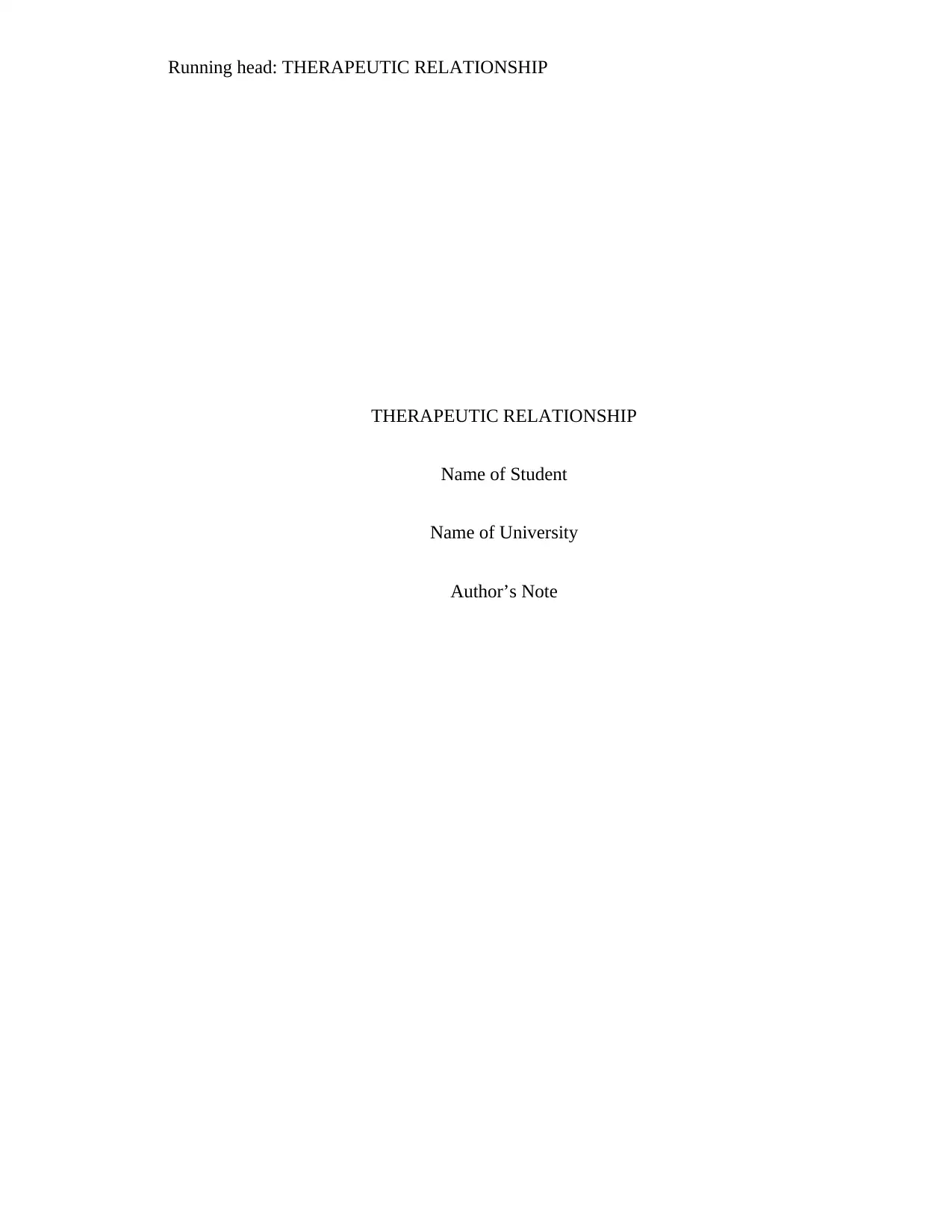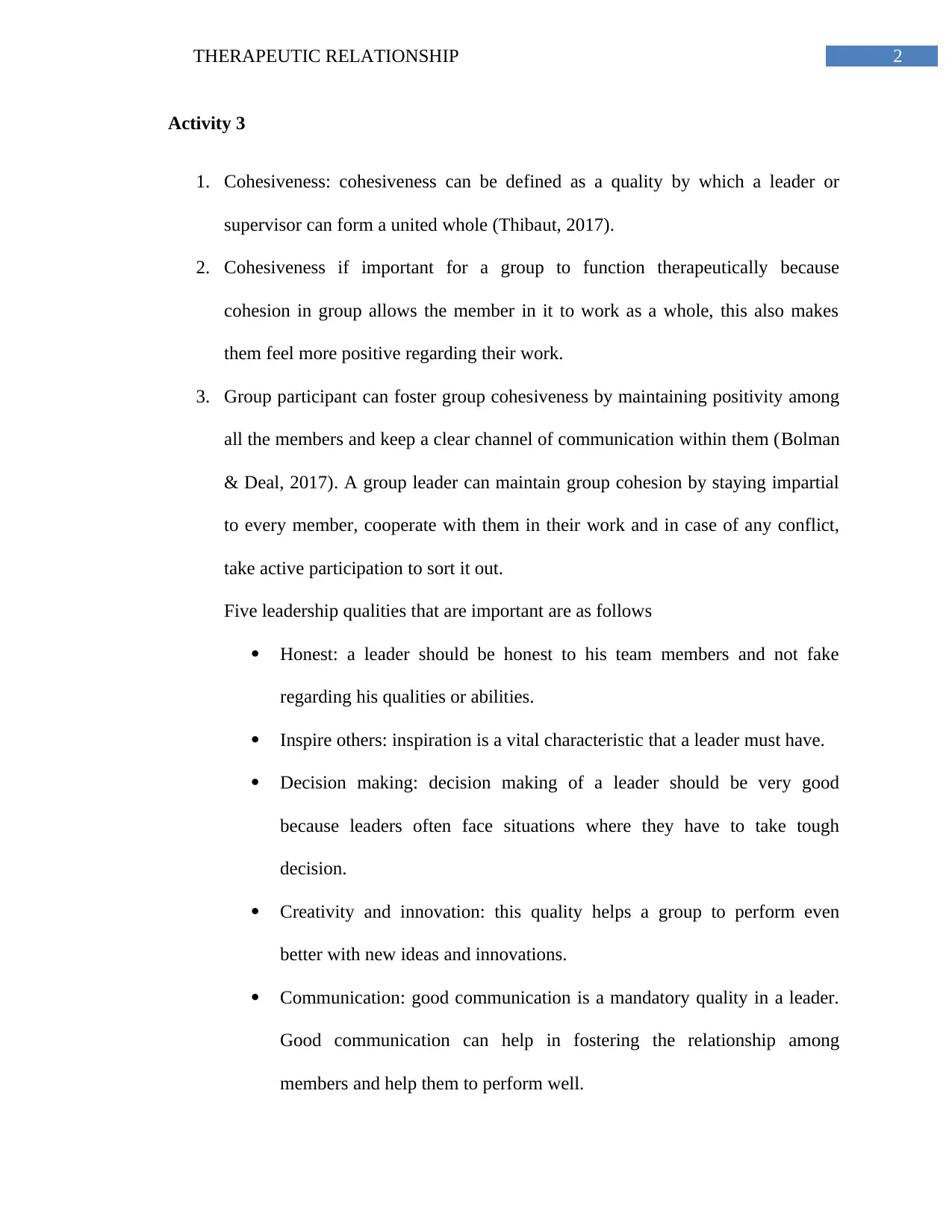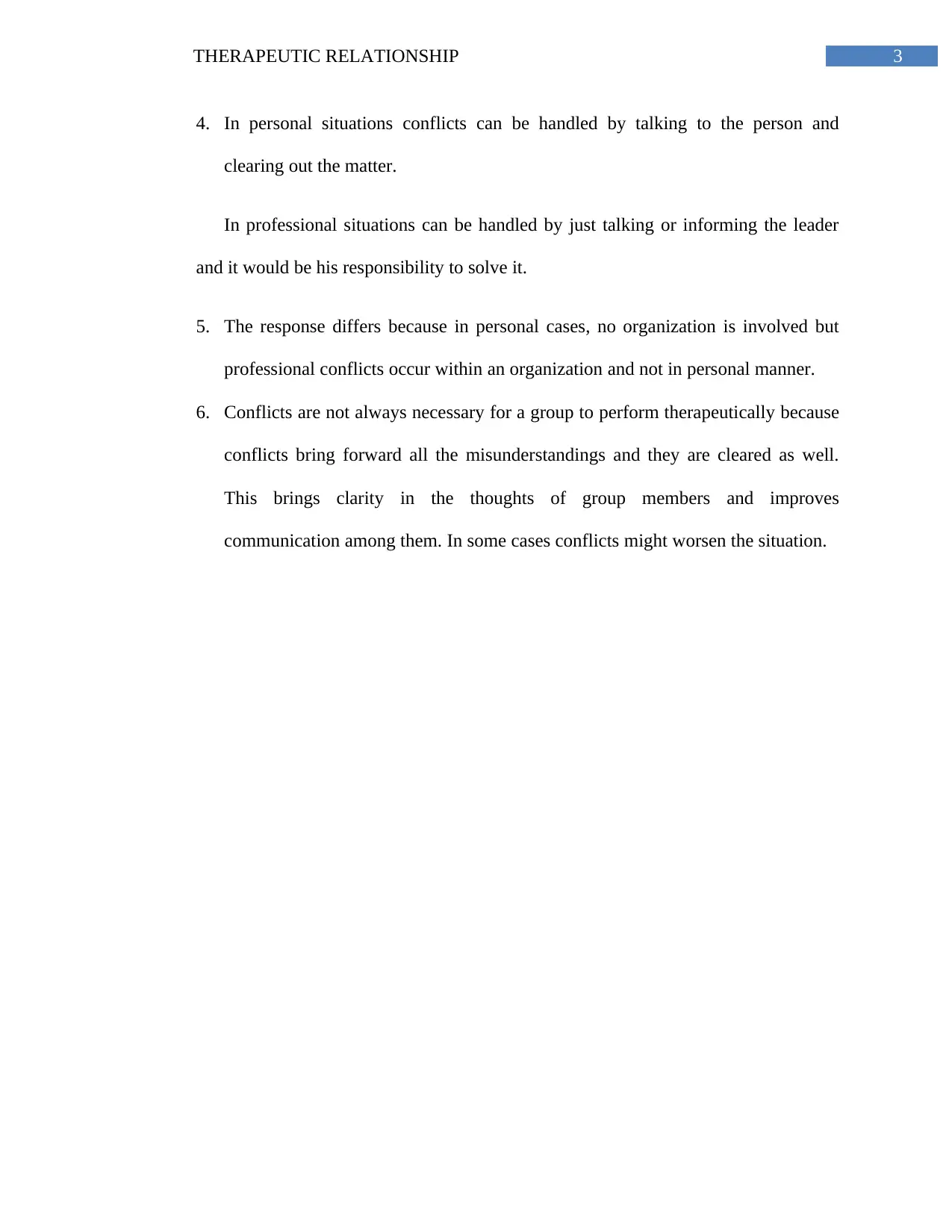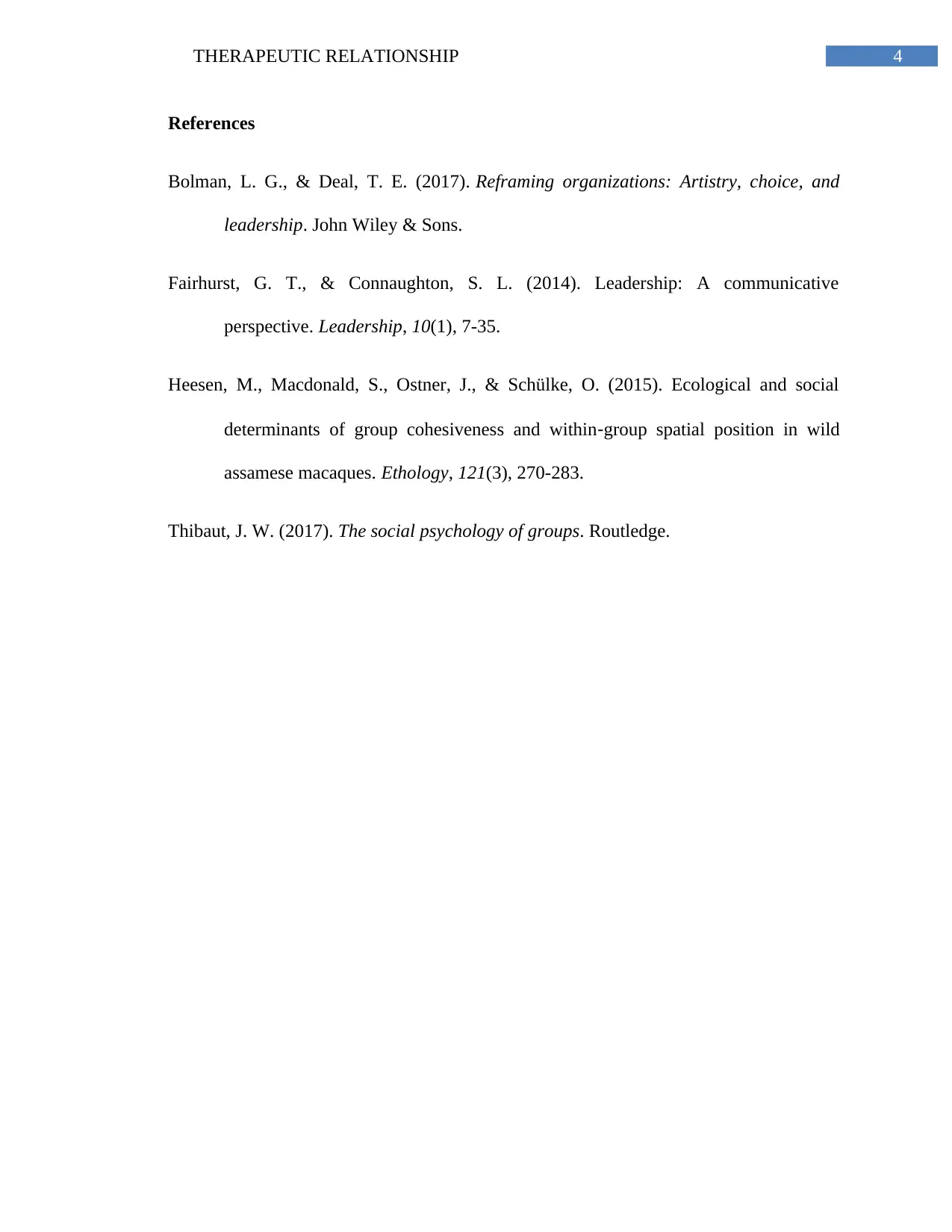Leadership Styles and Therapeutic Relationship Analysis
VerifiedAdded on 2023/05/26
|5
|798
|447
Homework Assignment
AI Summary
This assignment explores the dynamics of therapeutic relationships within a group setting, focusing on leadership styles and group cohesiveness. The student analyzes two sources related to group cohesiveness and leadership styles, discussing their implications. The assignment includes activities where the student reflects on personal experiences with different leadership styles, contrasting transformational and reactive leadership approaches. It defines and emphasizes the importance of cohesiveness in group settings, and it also identifies leadership qualities such as honesty, inspiration, decision-making, creativity, and communication. Furthermore, the student addresses conflict resolution strategies in personal and professional contexts and examines the role of conflict in therapeutic group performance. The assignment highlights the importance of clear communication, impartiality, and positive interactions for effective group functioning, supported by relevant references.
1 out of 5












![[object Object]](/_next/static/media/star-bottom.7253800d.svg)